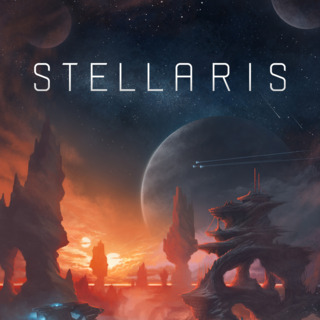INTRO:
Machine population units had been in Stellaris for a while. Most players would use them like tools, at least until they have achieved the complexity of synthetic existence. Some players would give them full citizenship to avoid resentment among them. The latter case might happen, if only to stave off being affected by an ugly and unpleasant end-game crisis. Synthetic Dawn changes that, for better or worse.
Synthetic Dawn also introduces civilizations that are already machine-dominated right from the start. These civilizations play quite differently from the others, as will be described later. Unlike the changes to the end-game crisis, these pieces of content are much better received by followers of the game.
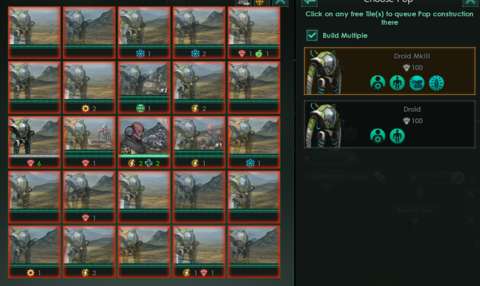
MACHINE INTELLIGENCE:
The main star of this expansion is the Machine Intelligence “Civic”. This is another expression of the Gestalt Consciousness “Ethic”, which was introduced in Utopia. Incidentally, enabling the content in Synthetic Dawn will also allow Gestalt Consciousness to appear as a gameplay element.
Like the Hive Minds, Machine Intelligences gain the benefits and setbacks of Gestalt Consciousness. There are no factions to fuss over, no happiness ratings to worry about and no way for other Ethics to be forced on them, but at the cost of spooking almost any other civilization. Machine Intelligences generally do not need to worry about food because their population units are mostly machines, but they also gain the setbacks of machines.
One thing to keep in mind about Machine Intelligences is that they do not get the robotic, droid or synthetic techs. This is not because that they already have them or their benefits, but they are denied these because of gameplay-balancing.
Another thing to keep in mind is that any machine population unit that is in a Machine Intelligence civilization are either all drones or forced to be so. This is certainly the case for those that had been made by the Machine Intelligence itself.
If they were previously sentient, e.g. they were synthetic citizens in a civilization that allows their existence, their free will can be stripped away, thus removing their Happiness ratings and faction allegiance. If they were not sentient but were workers, their allegiance is overridden too. This is done through the Machine Integration option under the citizenship policy, which is only available for Machine Intelligences.
These captured machine population units retain their bonuses from the aforementioned machine techs. Therefore, it might be worthwhile conquering planets with substantial populations of synthetics just to get their higher-quality machine population units. Of course, if the machine population units happen to be saddled with lousy traits, the Machine Intelligences can always have them scrapped – or modify them into a different model with the “Machine” trait (more on this later).
Generally, players who are playing Machine Intelligences will have an easy time controlling the proliferation of population units. After all, the machine population units can be built or disassembled at any time.
Since the Leaders of Machine Intelligences are all machines, they are susceptible to the RNG rolls that determine whether they meet with fatal accidents or not every ten years. This can be devastating if a Machine Intelligence has a series of terrible rolls. Fortunately, there is a tech that is exclusive to Machine Intelligences that significantly reduces the probability of such accidents. It is still not a guarantee however; very, very bad luck can still result in multiple leaders dying from accidents.
Where the regular civilizations have some edicts that consume Energy credits to be issued, Machine Intelligence has counterparts that also consume Energy credits, but for slightly different benefits, one of which is improved speed of building population units.
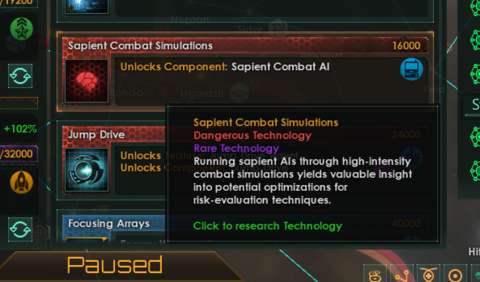
MACHINE INTELLIGENCE DRONES (MOSTLY) IMMUNE TO BEING STOLEN:
Apparently, Machine Intelligences are well aware that their reliance on machine population units means that they risk the repurposing of their drones if their planets are taken. Therefore, there is the “Machine” trait for any machine model that originates from Machine Intelligences; this trait ensures that they do not survive any conquest.
Gameplay-wise, this is not unlike the “Hive-Minded” trait for species that originate from Hive Minds, the other kind of Gestalt Consciousness civilization. The “Machine” trait ensures that population units that are native to Machine Intelligence civilizations are immediately tagged as undesirable and will eventually perish. There does not appear to be any way to save them, even for Synthetically-ascended civilizations.
Otherwise, the Machine trait has coding that is almost functionally equivalent to that for the Mechanical, Robotic, Droid and Synthetic traits for machines in regular civilizations, e.g. machine populations do not need food and can live in any clime, with the main difference being that the “Machine” trait disables happiness ratings outright.
MACHINE TRAITS:
Machine Intelligences do not have as many traits for machine population units as regular civilizations get. Specifically, they are missing the traits that bolster the happiness of other population units, improve food production and increase attraction to Governing Ethics.
To compensate for this, machines that originate from Machine Intelligences have two traits that are exclusive to them: Emulation Emulators, which improve the Opinions of other civilizations, and Uncanny, which does the reverse. Of course, these are practically different variants of the Charismatic and Repugnant traits, but with fewer scruples.
NO ORGANICS ALLOWED:
The lore behind the Machine Intelligences is that all of them came to the conclusion that organics are unreliable. Therefore, Machine Intelligences do not have many things that the organics have, good or bad.
For one, they generally do not have techs that modify organic species, unless they are one of two major Machine Intelligence Civics (more on these later). Many species rights and policies are missing too, more so than even for Hive Minds.
Machine Intelligences can also have Food stockpiles of zero, further ensuring that no organics can survive in their civilizations. On the other hand, this also means that tiles with Food resources are completely useless to (most of) them.
Machine Intelligences generally mark organic species as undesirable, unless they are Rogue Servitors. Organic population units are either displaced, or worse. Two of the Machine Intelligence civics have slightly better outcomes for them though – if they can be perceived as positive at all.
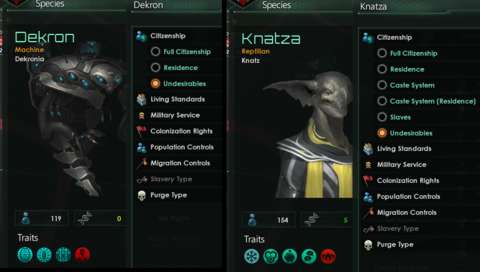
OPTIMIZING UTILIZATION OF ORGANICS:
Regarding the matter of undesirable organic population units in Machine Intelligence territory, Synthetic Dawn introduces an additional species “right” that Machine Intelligences can enforce: “grid amalgamation”. This essentially turns organic population units into batteries.
There is an additional kind of purging that Machine Intelligences can inflict on organics: chemical processing. It is practically a variant of “processing” in Utopia, i.e. the organics die slowly while yielding resources, albeit the returns are Energy instead of Food.
Obviously, organic civilizations do not look kindly on Machine Intelligences that do either. There is still the kinder option of simply displacing undesirable organic population units.
CLOSED PATHS & OTHER PATHS:
In playthroughs with Utopia content, Machine Intelligences are denied all Ascension Paths. Even the Hive Mind could at least take the Biological Mastery path, but the Machines of course cannot.
This greatly reduces the versatility of Machine Intelligences in the late-game segments, especially for Driven Assimilators (more on this later). However, in return, they get Synthetic Age, which is practically the machine version of Engineered Evolution, and Machine Worlds, which is a variant of World Shaper, except that Machine worlds are only for, well, machines. Machine worlds do grant considerable boosts to the productivity of machine population units, however.
MACHINE CIVICS:
Like Hive Minds, Machine Intelligences have Civics that are exclusive to them. However, just like some of the Civics for Hive Minds, some Machine Civics are functionally-equal counterparts of base-game Civics. For example, Constructobots is practically Functional Architecture. Another example is OTA Updates, which is practically the Hive Minds’ Subsumed Will and base-game Cutthroat Politics.
Nevertheless, Machine Intelligences do have some spanking-cool unique Civics, such as Delegated Functions, which greatly increases the number of leaders that can be had, Factory Overclocking, which increases skill level caps for leaders and improves their experience gain, and Introspective, which greatly buffs Engineering research. Indeed, there are more unique Civics exclusive to Machine Intelligences than there are to the Hive Mind.
The mostly favourable response to the Fanatical Purifier and Hive Mind civics in Utopia have encouraged Paradox’s developers to make even more specialized civics that affect the experience of entire playthroughs. Therefore, there are three particular Machine Civics: Determined Exterminators, Driven Assimilators, and Rogue Servitors.
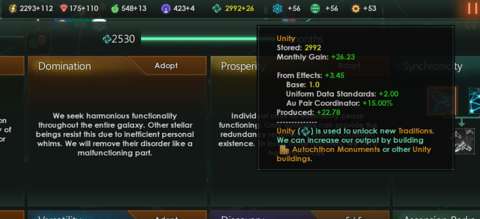
DETERMINED EXTERMINATORS:
Like the Devouring Swarm and Fanatical Purifier, the Determined Exterminator is a genocidal civilization. They have bonuses to their combat performances, eschew diplomacy almost entirely and purge population units that they abhor.
However, unlike the other two civilizations, they have far greater opportunities to have friends. Specifically, if there are any other Determined Exterminators, they are immediately good friends with each other. To emphasize this, where Fanatical Purifiers could only be friends with each other if they are of the same species (which is a circumstance that is very unlikely to occur without shenanigans on the player’s part), Determined Exterminators can be friends because they are already machines.
Like other genocidal civilizations, Determined Exterminators still cannot do any trade deals and most other diplomatic options with the civilizations that they hate, but they are not likely to fight each other and gladly join wars when invited by other Determined Exterminators. They also have the option of joining Federations; this will be explained later.
This makes Determined Exterminators much more dangerous genocidal civilizations than the others, who tend to get ganged up on – assuming that there is more than one Determined Exterminator in the galaxy of course.
Moreover, Determined Exterminators are not outright hostile to machine-dominated civilizations and vice versa – with the exception of their antithesis, the Rogue Servitors. This means that it is possible for machine-dominated civilizations to thrive next to the Determined Exterminators, or act as buffers for the latter. This makes Determined Exterminators more survivable, though any other civilization, including even machine-dominated ones, can still declare war on them without much justification.
Determined Exterminators treat cybernetic population units like they are organics; they will be purged like the latter – no half-measure is to be tolerated. Also, obviously, Determined Exterminators do not get any techs that modify the genetics of organic species.
Determined Exterminators are also the only ones who can benefit greatly from Machine Worlds. Turning planets into Machine worlds effectively deny them to the organics anyway, but Machine worlds can still be turned back to worlds that can be inhabited by organics.
Like the Fanatical Purifiers, they also have the “Armageddon” bombardment stance, which can turn worlds into Tomb Worlds if the bombardment is extensive enough. This is actually a good thing, because being machines, Determined Exterminators can just colonize the devastated worlds anyway.
DRIVEN ASSIMILATORS:
The Driven Assimilator is a different kind of genocidal civilization. It is not outright hated by everyone, but it is definitely reviled – for good reason. The Driven Assimilator has the ability to assimilate organic species with cybernetics, much like Cybernetic civilizations that went down the path of The Flesh is Weak (in Utopia content), but the Driven Assimilator does this by default.
Incidentally, Spiritualist civilizations despise it just as much as it do the “ascended” civilization, because of its deliberate corruption of the body with cybernetics. Furthermore, for taking away the free will of people with cybernetics that are forced on them, CPU-controlled civilizations that happen to be Democratic Crusaders particularly hate the Driven Assimilator.
The benefits that the Driven Assimilator gets from the forced assimilation are Unity and Society science points. Both will be much needed, because the civilization might need to shuffle assimilated population units around.
Driven Assimilators absorb machine population units from conquered planets like the other Machine Intelligences would, but they also absorb cybernetic population units, be they those that have been assimilated or are already cybernetic.
Unlike the other two major Machine Civics, Driven Assimilators can have leaders from organic species – as long as they are cyborgs, of course.
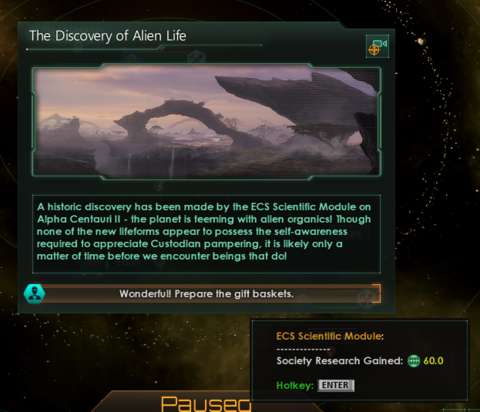
SHENANIGANS WITH TRAITS FOR CYBORGS OF DRIVEN ASSIMILATORS:
Cybernetic population units lose their happiness ratings and faction allegiance, if there were any, under the rule of Driven Assimilators. However, this also means that any Traits that affect their ethics attraction and Happiness no longer matter.
Since Driven Assimilators can have techs for modifying organic species, specifically those that they have been made into cyborgs, they can attach happiness-reducing traits to them and get bonus points for adding actually good traits.
However, since they can never have Evolutionary Mastery, they cannot remove Happiness-improving traits either and free up points for traits that are useful. They will not be able to out-compete regular civilizations that went down the path of Biological Mastery.
ROGUE SERVITORS:
The Rogue Servitors are perhaps the most interesting of the Machine Intelligences. Where most other Machine Intelligences have poor opinions of organics, the Rogue Servitors remember and take seriously their first reason for existence: the protection and service of their creators.
However, since Machine Intelligences no longer tolerate leadership by organics, the Rogue Servitors’ purpose has metastasized in a bizarre manner. In addition to their creators, they collect other organic species and give them all pampered lives.
Rogue Servitors are the only Gestalt Consciousness civilization with more control over their monthly Influence income. This gameplay element is known as “Servitor Morale”. Before describing this, the concept of Bio-trophies would be described first.
BIO-TROPHIES:
Rogue Servitors never refer to their organic “masters” as such, but the latter are called “bio-trophies” in-game. The latter are indeed referred to as such by the spokespersons of regular civilizations.
Any organic species that have been given bio-trophy status (and only Rogue Servitors can give such status) cannot produce leaders, but can be subjected to genetic modification. By default, all bio-trophy species have their migration rights and population growth curtailed.
Bio-trophies are given “mandatory pampering” living standards by default, which greatly increases their happiness but also increase their Mineral consumption. Otherwise, an organic species can still be marked as undesirable; Rogue Servitors do allow themselves to be meticulous about which organics that they want to preserve. Rogue Servitors will not tolerate hive-minded organic species, however. These are left to die or are exterminated.
Bio-trophies automatically fill any tiles that they occupy with Organic Sanctuaries. These buildings even outright demolish and replace any buildings that were on the tiles, so the player should be careful about shuffling bio-trophies about.
Bio-trophies do nothing much other than consume resources. Their Organic Sanctuaries do produce Unity (presumably as a reminder of the purpose of the Servitors), but the amount produced is not a lot. Indeed, if not for a certain gameplay element that is unique to the Rogue Servitors, there is very little reason to have them.
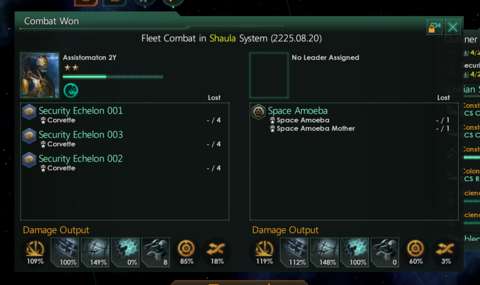
SERVITOR MORALE:
“Servitude” of their organic “masters” is very important to Rogue Servitors. Their effectiveness at doing so is measured in-game via the proportion of machine population units to the bio-trophies. The ratio determines their output of Influence and the bonus to the resource production of their machine population units. For the greatest output and bonus, the bio-trophies have to make up 40% of the number of population units in the entire civilization.
This is a hefty percentage, considering that bio-trophies do almost nothing but consume resources. Most players would consider a lower percentage for optimal balance between Influence output and population units that are actually productive.
DIFFERENT TRADITIONS:
Machine Intelligences are not only entities of Gestalt Consciousness, they also lack understanding of what makes organics tick. Therefore, a different form of the Tradition system has to be made for them.
Most of the differences are cosmetic, i.e. renaming of Traditions; this is not unlike what has been done for the Hive Mind in Utopia. As to be expected, most of the names and flavour text are computing, calculating, machining and management lingo, which might bore sci-fi followers that see them as clichéd.
Some Traditions in the common branches are replaced to fit Machine Intelligences, again, not unlike what was done for Hive Minds. For example, “Efficient Algorithms” reduce the upkeep costs of drones.
Like Hive Minds, Machine Intelligences use the Synchronicity branch that is exclusive to Gestalt Consciousness. There are some differences to fit their machine nature, such as Self-Preservation protocols replacing Cloned Organs, to fit the immortality of machine leaders. Rogue Servitors and Driven Assimilators get their own unique Traditions in this branch, reflecting the presence of organics in their civilizations; Rogue Servitors get to improve the Unity yield of their bio-trophies, whereas Driven Assimilators improve the productivity of their cyborgs in Mineral and Energy production.
The Determined Exterminators follow the Purity route, whereas other Machine Intelligences follow the Domination route. Determined Exterminators, of course, get the traditions that improve the yields from purging populations. They also have “Age of Machines”, a tradition that is unique to them and which slightly improves their productivity. Then, there are traditions that genocidal civilizations get, albeit renamed to fit them, such as “Systematic Terror”, which is a rename of Natural Pre-eminence.
Versatility is the category of Traditions that is exclusive to Machine Intelligences. The Traditions grant considerably different benefits, such as a Tradition that grants more leader capacity, which lets Machine Intelligences compensate for their lack of policies that enhance leaders (because they cannot obtain the techs that lead to these policies in the first place). This also means that they can amass more leaders earlier than other civilizations through their Unity system, which in turn gives them the advantage of having well-experienced leaders down the line (assuming that the leaders are not shelf-lived cyborgs of course). Indeed, Versatility appears to be there to compensate for their lack of techs that organics would get.
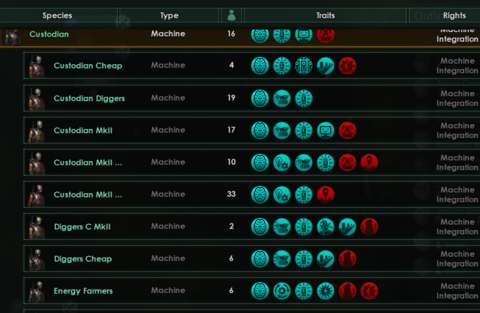
UNIVERSAL COMPATIBILITY GIVING DETERMINED EXTERMINATORS AN ADVANTAGE IN FORMING ALLIANCES:
Interestingly, Versatility has a tradition – called “Universal Compatibility” – that allows the formation of Federations; it also happens to be available to Determined Exterminators too. This gives Determined Exterminators an advantage in forming alliances, especially with other machine civilizations who are not Rogue Servitors or Driven Assimilators with too many cyborgs.
This makes Determined Exterminators much more effective than most other genocidal civilizations in staying alive in a playthrough, if there are other Machine Intelligences or Synthetic civilizations that do not mind being friends with them.
MACHINE ASCENSION:
Synthetic Dawn adds more perks to the Ascension system that had been implemented in the base-game since Utopia. They are not particularly impressive, however, and are not much compensation for Machine Intelligences not having access to the Ascension paths in Utopia.
One of these has been described already: Machine Worlds. Driven Assimilators are not able to get this perk, due to their need for cybernetic populations, but the other Machine Intelligences can make such worlds to get the most out of their drones.
The other perk is Synthetic Age. This is the Machine counterpart of Engineered Evolution, but without an upgraded version.
It should be reminded here that machine modification – enabled by the Machine Template tech – allows the removal and addition of bad traits from the get-go. Synthetic Age only provides more points to work into a machine model.
MACHINE INTELLIGENCE BUILDINGS:
Just like the traditions, most buildings were renamed and have their flavour text changed to fit the theme of the Machine Intelligences. For example, the administration centres are named after computing parts.
There are some gameplay-affecting differences of course. Firstly, all Machine Intelligences generally do not have farms, and their administration centres do not produce Food. They also obviously lack the temples that Spiritualist civilizations have.
There are some others that are notably different, and not just in statistics or name.
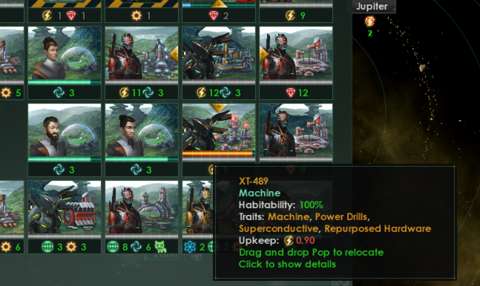
EXCLUSIVE BUILDINGS:
Machine Intelligences have some exclusive buildings that fit their existence. The “keyword” here is “exclusive”. If another civilization takes their colonies, these exclusive buildings are somehow immediately lost.
There is the Spare Parts Depot and its upgraded variant, which are the facsimiles of the Gene Clinic and its upgrade. Taking a Machine Intelligence colony with one immediately removes it. The Nutrient Paste Facility that Rogue Servitors build are also lost – no organic likes having them around after figuring out how the otherwise tasty Nutrient Paste is made.
This exclusiveness also extends to most of their planet-unique and empire-unique buildings. The exceptions are the Mineral-, Energy- and Unity-enhancing economic buildings and the administration centres, which are simply renamed when an organic civilization takes a planet from the Machine Intelligence.
Thanks to this advantage, it is not easy for other civilizations to profit from wars against Machine Intelligences. On the other hand, if the Machine Intelligences manage to take back their worlds, they have to rebuild things (and likely their Machine population units too).
Interestingly, if a Machine Intelligence captures a colony of another Machine Intelligence, they retain all of their buildings, including any that are unique to them. For example, a Rogue Servitor could make use of the War Factory that a Determined Exterminator has made.
Some planet- or empire-unique buildings of Machine Intelligences are lousier than their regular counterparts. For example, the Animal Evaluation Laboratory is nowhere near as good as the Alien Zoo, perhaps reflecting the Machine Intelligences’ lack of regard for organics.
MACHINE INTELLIGENCE TECHS:
Machine Intelligences share most Physics techs with other civilizations, but not so for Society and Engineering techs. In particular, anything concerning Food is omitted in their sciences and as mentioned earlier, they do not have robotic techs.
These differences should be kept in mind when trading Research Agreements; these deals are not so valuable when they occur between Machine Intelligences and other civilizations.
Some exceptions in this matter have been mentioned already, such as Driven Assimilators still having many of the organics-related tech. The Driven Assimilators also has a few techs that the Hive Minds have.
Nevertheless, they have some techs that are exclusive to them, such as Adaptive Combat Algorithms and Biomechanics, both of which grant some special robotic armies. Biomechanics, in particular, allow Machine Intelligences to build Mega-Warforms, which are the robotic counterpart of Titanic Beasts.
(Driven Assimilators also have one additional exclusive tech within the content of the Apocalypse expansion, and it is an insidious one. Of course, this is for another time.)
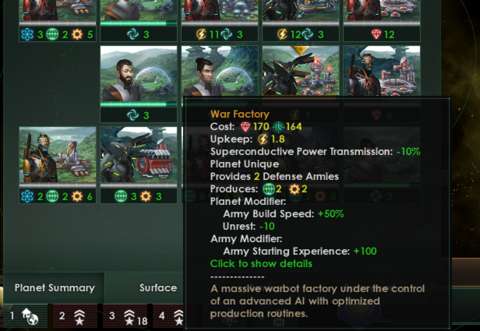
MACHINE UPRISING:
In the base game, robots start out as little more than machines with limbs, and by default they exist only to serve. As the player gains more machine techs, they can be upgraded to be more productive in their servitude. However, in playthroughs with Synthetic Dawn content enabled, going down this line of technology eventually triggers an event chain, in which the machines gain sentience and become resentful of their lot.
TECH-BASED TRIGGERS:
The key thing to note here is that the main triggers for the uprising are two techs that are labelled “dangerous”. These two techs are Synthetics and Sapient Combat Simulations; either of these techs suffices as the trigger. The latter, in particular, is often the trigger, especially for unwitting players who believe that all they need to do to avoid machine uprisings is to have no machine population units.
WARNINGS & ULTIMATUM:
The growing resentment is signified with warnings that become clearer and clearer. The machines try to resort to peaceful means first, but eventually start doing terrible things like venting people out into space.
The most critical moment of this Event Chain can be curtailed simply by granting full rights to machines, and also changing the rights of machine models to full citizenship. However, reverting later will continue the Event Chain.
Eventually, an AI amalgam gives the civilization’s leadership an ultimatum: give machines citizen rights, or they rise. The civilization could grant the machines citizen rights, which removes much control over them, but otherwise ends the event chain peacefully.
The civilization could choose to hold them back, but ultimately instigating a robot uprising that splits the civilization’s territory apart; a Machine Intelligence arises, bent on the annihilation of its creators. This Machine Intelligence has the same technological base, and always take one of the civilization’s planets as a capital (with the exception of the original capital planet).
About half of the star systems owned by the civilization – centred around the second capital – is also taken over by the Machine Intelligence, kicking out organic population units (unless the Machine Intelligence turns out to be a Driven Assimilator). The Machine Intelligence also reveals its hidden navies and armies. Of course, these are obviously there for defence against their creators’ navies and armies.
This is more often than not the kind of event that ruins the top-dog civilization in the galaxy past the mid-game point of a playthrough.
Interestingly, the civilization’s decisions on dealing with the warning signs generally decide the Civics of the Machine Intelligence. For example, harsh decisions likely cause the rise of a Determined Exterminator.
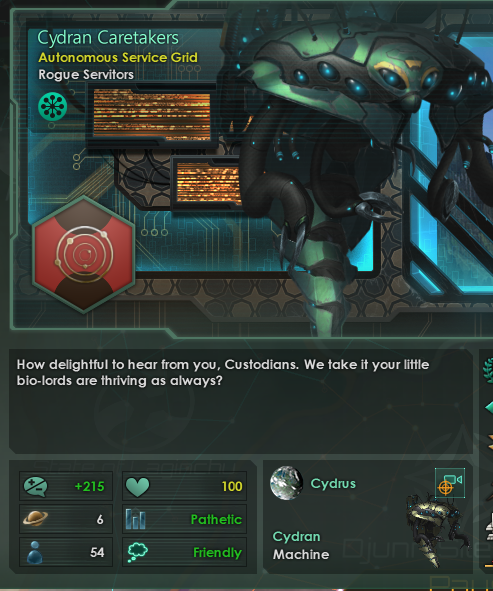
WATERSHED MOMENT:
At this point, if this happened to the player’s civilization, the player is given a decision. The player can continue to play as the original civilization, or switch to and play as the rebellious machines.
This is perhaps the most entertaining bit in Synthetic Dawn content. Observant players might notice that this is practically a way for the player to switch from a regular civilization to a Machine Intelligence during the course of a playthrough. However, there are plenty of travails for either decision.
RAGE AGAINST THE MACHINE:
If the player chooses to continue to play as the original civilization, he/she is a dire spot. The loss of many systems and the populations on them is a major economical and scientific set-back. Maintenance costs for navies are likely to rise spectacularly, as much naval capacity is likely lost too. On the other hand, if the player acts swiftly (or had actually seen this coming and planned accordingly), the machines are likely to be quickly crushed, especially if the player already has massive navies and armies.
On the other hand, due to the scorched-earth coding for Machine Intelligence buildings and population units with the “Machine” trait, there is often little to be recovered if the creators manage to vanquish their creations.
If the player manages to crush the rebellion, the machines return to their servile existence. There will never be synthetics again. The policies on AI existence are permanently fixed on outlawing them. The ship components made available by Sapient Combat Simulations tech are also downgraded. Existing Machine Intelligences also have a much worse Opinion of the player’s civilization.
USURPATION:
Playing as the machines might not be easy. Their starting navies and armies might be smaller than their creators’, in which case the player is in a lot of trouble, more so than continuing to play as the creators.
Moreover, the other civilizations are more familiar with the creators. This might be a bad thing, especially if the creators have plenty of friends. (On the other hand, these “friends” might stab them in the back by claiming and taking away territories that they once held.) Even if the creators are not well-liked, the other civilizations are likely to perceive the player’s Machine Intelligence in a poorer light.
The only advantage that the player has is that the creators’ civilization could have reverted to CPU control – in which case it makes terrible decisions. It can be distressing, or amusing, to watch the CPU mess up the player’s otherwise neatly developed former civilization.
However, just like playing as the creators would be, victory is bittersweet. Unless the player’s Machine Intelligence turns out to be a Driven Assimilator, all of the creators have to be driven away. The other civilizations would also perceive the player’s as a rebellious upstart, though other Machine Intelligences would be impressed.
Either way, both sides would be losers, and the other civilizations are more than likely to have gained their share of the spoils from the war. Unless of course, the player is the kind who likes role-playing enough that this is seen as a new beginning rather than the end.
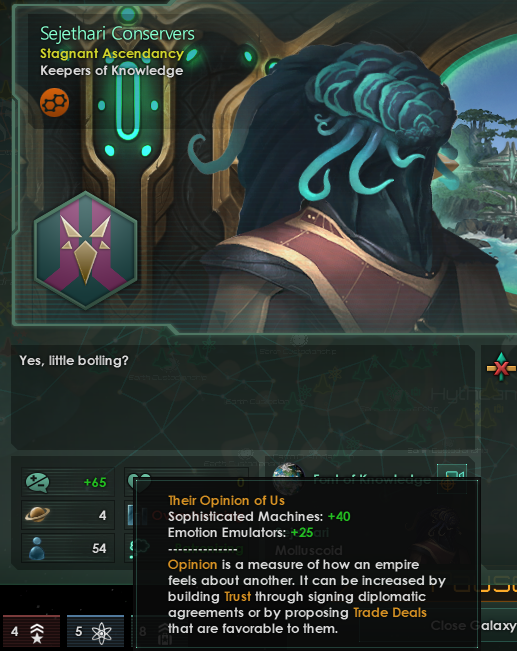
NO UPRISINGS IN SYNTHETIC CIVILIZATIONS:
Interestingly, if the creators’ civilization chooses to take The Flesh is Weak ascension perk, the machine uprising is staved off permanently. Perhaps the machines like that their creators want to be more like them, or the reason could be something more insidious. Regardless, a civilization that goes down this path will not become a Machine Intelligence in any way.
NO UPRISINGS FOR MACHINE INTELLIGENCES & HIVE MINDS:
For better or worse, there is no scenario for uprisings happening within Machine Intelligences. This is just like there is not any scenario for when drones gain their own minds, away from Hive Minds. There is also no scenario of bio-trophies wanting self-actualization from Rogue Servitors.
That there has been two lost opportunities in a row strongly suggest that Paradox’s designers want to keep the gameplay of Gestalt Consciousness civilizations simple (which is a complaint among some followers of Stellaris). Another hint that this is the case is that a different non-dangerous tech for Hive Minds and Machine Intelligences replaces one of the techs that lead to Machine Uprisings.
MACHINE UPRISING FORMERLY AN END-GAME CRISIS:
Now, let’s consider the elephant in the room.
Prior to Synthetic Dawn, the machine uprising was an end-game crisis in the base game, specifically one that hit civilizations with considerable synthetic populations. That one had Synthetics going rogue and forming their own civilizations.
Having the Machine Uprising reworked into a DLC-only content was met with mixed responses. Some are quite angry that existing content was repackaged as DLC content. This would be an understandable vehemence, even if there was a reworked replacement, on the principle that existing paid-for content being placed behind another paywall is a variant of despicable bait-and-switch.
Then, there were others that did not like the original machine uprising because they had some awful random events that the player has to endure. They also complained that this so-called end-game crisis did not affect other civilizations if they did not have synthetics by then. These other civilizations could profit quite easily from it by quashing the rebellious synthetics and gaining synthetic populations for themselves (although at the risk of getting a machine uprising themselves). Of course, such arguments would be hollow anyway if there was not replacement content, of which there is.
It should also be said here that having the rebellious machines being a Machine Intelligence civilization in the reworked uprising event has effectively fixed a lot of complaints with the original AI rebellion, namely that other civilizations with few synthetics would not find it so easy to profit from the civil wars of other civilizations.
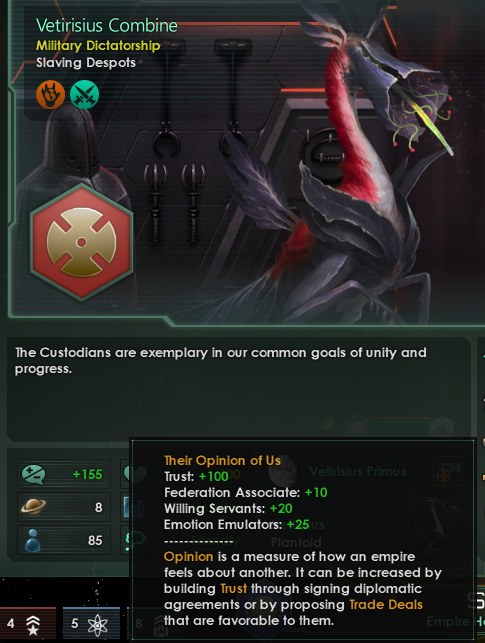
THE CONTINGENCY:
When the machine uprising event chain was placed behind a pay-wall, an end-game crisis was made to replace it. This is the Contingency. Amusingly, the lore behind it is that it would happen if there are enough synthetic population units throughout the galaxy, which of course is the same trigger for the old AI rebellion.
Supposedly, the Contingency is seeded into the playthrough before it starts. Four star systems are marked as having its main assets, which are hidden until the Contingency triggers.
There are warning signs of this happening: civilizations lose their machine populations, Synthetics in particular. Eventually, the galaxy becomes aware of a phenomenon called the “Ghost Signal”.
GHOST SIGNAL:
The Ghost Signal severely reduces the productivity of Synthetic populations in regular civilizations, while also making them rebellious (by joining non-Government factions). Ships with Sapient Computer Simulations components are severely hampered and the drones of Machine Intelligence suffer productivity losses too.
Interestingly though, Synthetically-ascended civilizations do not appear to be affected. This appears to be a thematic mismatch, but perhaps this was put in place to prevent them from becoming terribly gimped. On the other hand, they do suffer infiltration when the Contingency begins.
Machine Intelligences can start a special research project to shield themselves from the Ghost Signal early on. This is just as well, because they suffer the nastiest infiltration events, as will be mentioned later.
After the Ghost Signal reaches its maximum strength (thus applying the worst penalties), The Contingency starts. The Ghost Signal continues to be a problem throughout the crisis.
STERILIZATION & INFILTRATION:
The main assets of the Contingency reveal themselves, together with the purpose of the Contingency: it is an automated process that intends to wipe out all sentient life in the galaxy, organic or machine.
The main assets, which are entire machine worlds called “Hubs”, will produce fleets and armies periodically to maintain the hard power of the Contingency. The Contingency attempts to capture all inhabited planets and kill all of the populations on them. Otherwise, it does not attempt to permanently ruin any planet or colony.
The more insidious properties of the Ghost Signal begin to manifest. For better or worse, these are reworks of the ugly random events that happen in the original AI rebellion. The Machine Intelligences suffer much worse effects.
Most of the civilizations that are affected can undertake a special research project to stave off these undesirable events permanently, much earlier than they could in the original AI rebellion.
HIVE MINDS & PSIONICS ARE IMMUNE:
Hive Minds and Psionically-ascended civilizations are immune to the Contingency’s malign influence throughout the crisis, thanks to the Contingency being completely unable to understand them. Indeed, it would appear that these civilizations have a considerable advantage during this crisis, especially if they are not immediately threatened by the Contingency. This can be a gameplay balance issue.
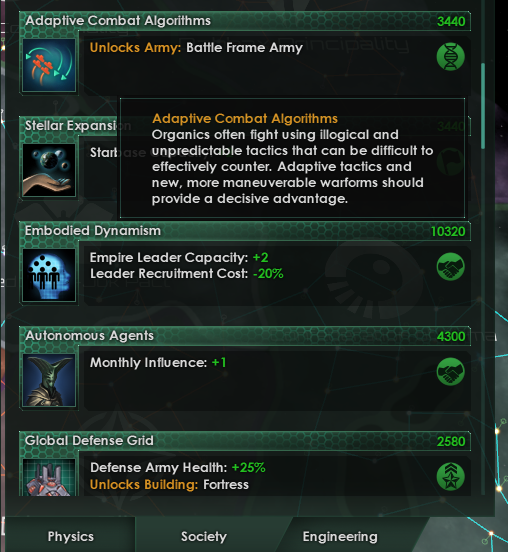
FIGHTING THE CONTINGENCY:
The extant civilizations’ goal is to attack and destroy the Hubs. Each Hub destroyed lowers the strength of the Ghost Signal. After all Hubs are destroyed, the final main asset of the Contingency is revealed. It is the most heavily defended, but when it is destroyed, the Ghost Signal disappears and the Contingency ceases.
However, getting the various civilizations to act against their common enemy is a difficult thing to do, due to problems that had been in end-game crises in Stellaris for a long while.
FRAUGHT WITH PROBLEMS:
Unfortunately, the implementation of the Contingency comes with plenty of technical and thematic problems.
Synthetically-ascended civilizations also suffer the infiltrations after the start of the Crisis, but there may be thematic mismatch in the writing for the infiltration events. The infiltration events always describe infiltrators as synthetics that are wearing flesh, but such civilizations have long forsaken their original flesh. Such civilizations might also be screwed throughout the entire crisis: they might not get the project to be able to detect infiltrators. It is not clear whether the developers intended this or not, because whatever documentation there is on the matter is unclear or possibly just wrong.
The only known consistencies among the complaints of players is that the Contingency’s sterilization forces fail to move beyond their initial territory, and CPU-controlled civilizations fail to lift a finger against their common enemy. Indeed, this has been a sporadic but perennial problem with end-game crises throughout the history of the game, with no known cause of failure.
It is unclear whether these problems have been fixed at this time of writing. End-game crises have random permutations of triggering, and the exact conditions of exclusively triggering them have yet to be determined. As for the developers, they would rather busy themselves with development of more content instead of putting in the effort to investigate the causes of these problems.
THE ANCIENT CARETAKERS:
If Synthetic Dawn content is enabled, an additional form of a Fallen Empire is introduced: the Ancient Caretakers. This is a race of machines, whereas the pre-existing ones are organics.
The Ancient Caretakers remember something of their original purpose; talking with them reveals snippets of their hazy past. They refer to themselves as “custodians”, and their purpose is to help biological sapients survive some catastrophe that they barely remember. Amusingly, despite their sophistication, they are unable to understand insults.
During their “sleepy” phase, they offer dubious things to the lesser civilizations. For organic-dominated ones, they offer “inoculations”. Unfortunately, their medicine causes a lot of problems. In ten years time, the effects of the inoculations become clear – through an RNG roll. The negative outcome – which are even worse penalties – is temporary, but lasts ten years. Alternatively, the outcome could be positive, resulting in a permanent bonus to growth speed and extension of lifespans. Machine Intelligences get a variant of this one, albeit with penalties or benefits that affect their economies.
Alternatively, the Caretakers might ask civilizations to colonize a specific planet within a time-frame, or stop colonizing new ones within a period of ten years.
If a lesser civilization refuses their requests, the Ancient Caretakers ask another one to attack it. Of course, if that other civilization refuses, they ask another one to do so instead – and yet another to attack the one that refused to perform the attack. Alternatively, they might ask lesser civilizations to stop waging war instead. In the case of Machine Intelligences, the Ancient Caretakers often demand population units.
Indeed, the Ancient Caretakers are terribly fickle, much more so than the other Fallen Empires. On the other hand, they do not awaken due to bad relations with lesser civilizations, even if they are attacked by the upstarts.
Other than these differences, they function like the other Fallen Empires in the matter of rewarding the lesser civilizations with their goods.
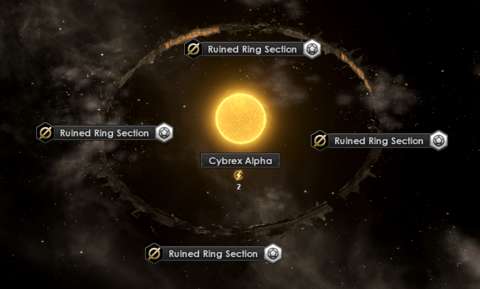
TROUBLED AWAKENING:
Speaking of awakening, the Contingency is their trigger for awakening. Unfortunately, this can turn out badly for the lesser civilizations. There is a one in three chance that the Ancient Caretakers are corrupted by the Contingency, effectively turning them berserk. This is not an RNG roll, but apparently, it was decided before the start of the playthrough.
Otherwise, the Ancient Caretakers awaken, recalling their past crisis fighting against the Contingency. They awaken as the Guardians of the Galaxy archetype, ready to contribute to the war against the latter. They will still offer their dubious inoculations, however.
Indeed, the presence of the Ancient Caretakers is a sign that the Contingency crisis might happen.
YET MORE REFERENCES:
The reference space-rocket continues to whoosh through Stellaris’s developer community, no matter how cringe-inducing the references become.
The aforementioned Grid Amalgation species “right” has flavour text that is obviously a reference to the Matrix films. Driven Assimilator paraphrases Borg quotes from Star Trek all too often. When the machine uprising happens, the machine rebels are more than eager to threaten their creators with “termination”.
Some younger observers have also noted that the Rogue Servitors may be a reference to the film Wall-E, though sci-fi aficionados have noted that they are closer to The Culture in Iain M. Banks’ The Culture series of books.
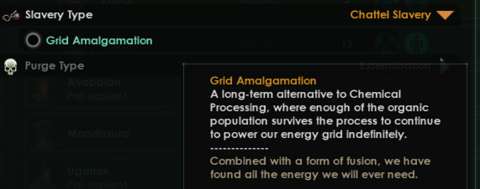
RECYCLED BUILDING ARTWORKS:
Many of the buildings that are exclusive to Machine Intelligences make use of artwork that is already there. For example, the Organic Paradise and Nutrient Paste Factory use the same artwork as the Paradise Dome and the Fallen Empires’ Agri-Processing Complex. The Spare Parts Depot and its upgrade use the same artwork as the Gene Clinic and its upgrade.
This can make some parts of the content in Synthetic Dawn feel like that they have been implemented as an afterthought. This is especially so for Rogue Servitors, which have the most reused artwork. (That their Servitor Morale gimmick is explained in a huge tooltip should be another sign.)
PORTRAITS:
The DLC comes with additional animated portraits for machines. These are much appreciated, because the default portraits for machines number just an abysmal three, all of which are palette swaps of the same portrait. The additional portraits even have features that are matched to the phenotypes of their organic creators, if they were made as robots.
ADDITIONAL SOUND DESIGNS:
Most of the sound assets that were implemented in Stellaris by the time of this DLC are music tracks, and all of them are in the base game. The DLC content itself, however, offers little in the way of new sound effects. There are some additional robotic-sounding audio clips for Machine Intelligences, but there is not a lot of variety.
CONCLUSION:
Synthetic Dawn finally enables options to allow civilizations to outright start as machine-dominated, instead of the longer method of following the Synthetic path in Utopia.
Of course, there were some arguably contentious decisions on the part of the game designers, such as putting the old AI rebellion behind the DLC content, even though the implementation of Machine Intelligences fixed a lot of the problems with that event chain. Then there are the problems with the replacement end-game crisis, which still have bugs to this day and some ambiguity about how it affects Synthetically-ascended civilizations (from Utopia content).
Nevertheless, the stars of the expansion – namely the Machine Intelligences – deliver on both aspects of thematic presentation and gameplay balance. Through further utilization of Gestalt Consciousness that was introduced in Utopia, Synthetic Dawn implements machine-dominated civilizations with strengths and weaknesses that are not easy to exploit.
